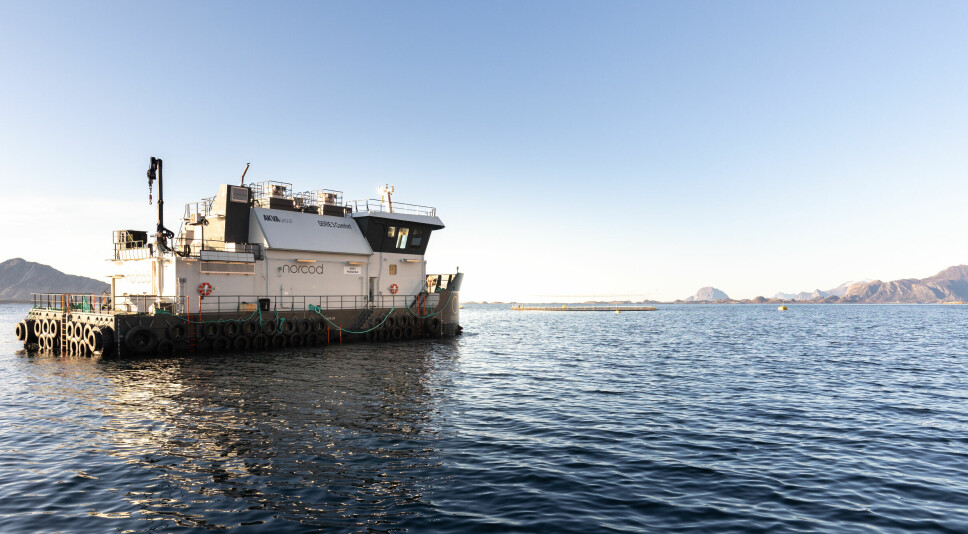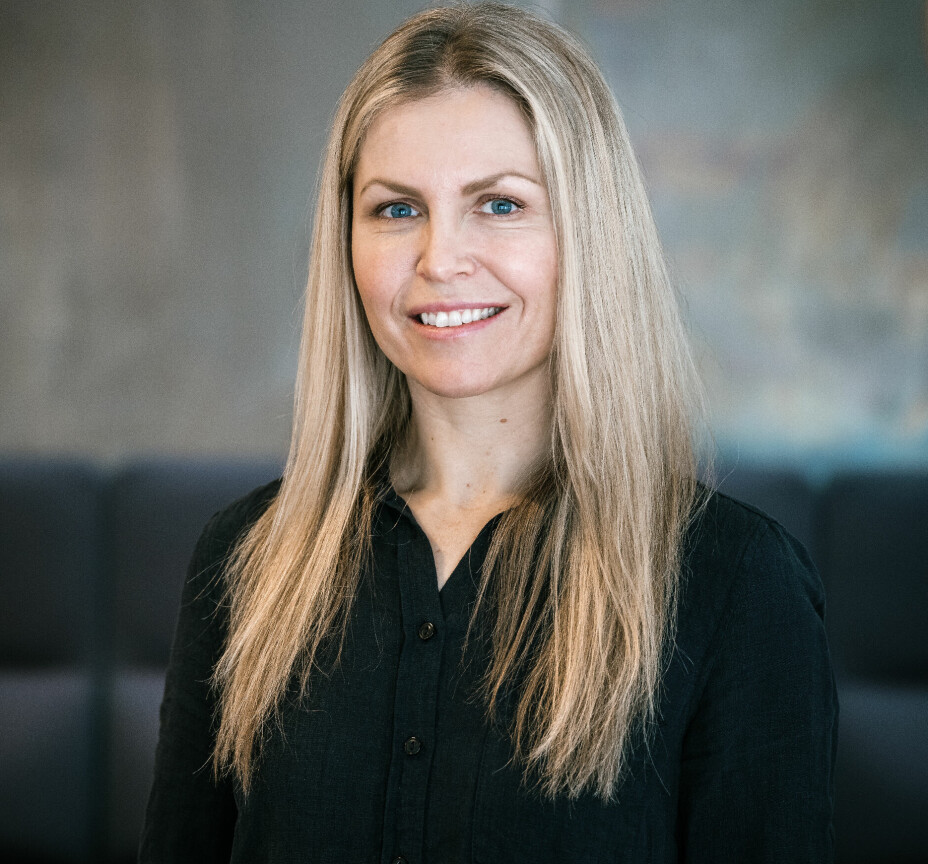
Cod farmer switches to shore power
Hydropower connection and electric workboat make site best in class, says Norcod
Norwegian cod farmer Norcod has completed a switch to shore power instead of diesel generators at its Froskiva site in the north of the country, it said today.
Norcod has also been using an electric-powered service vessel, Hilde S, at Frosvika since April.
“By installing wired onshore power, we are making a valuable contribution to reducing climate impact both locally and globally,” said Norcod’s chief sustainability officer Hilde Storhaug.
“Frosvika now stands as a low-emission facility that is, to my knowledge, best in class.”

Clean hydropower
The energy powering the feed barge at Frosvika in Meløy municipality, Nordland county, comes origin-guaranteed from clean hydropower, said Norcod.
“We estimate we’ll save around 160,000 litres of diesel on an annual basis, which translates to a 420-tonne reduction in CO₂ emissions related to the feed barge and the equipment it supplies with energy,” said Storhaug.
Unplugging the diesel generators, as well as feeding the fish using energy-efficient waterborne feeding technology, has also had a major impact on ambient noise levels.
“Near silent operations benefit not only the fish in the nets and the immediate surroundings, but also enhance the working environment for our employees,” said Storhaug.
Froskiva is the first Norcod site to go fully electric. The farmer is set to implement shore power at its production site at Jamnungen in Frøya municipality soon. “The configuration of shore power, electric feed barges and electric service vessel is the most emissions-reducing equipment set-up seen to date in Norwegian aquaculture industry. This strategic approach to procurement remains our priority,” Storhaug said.
The cod farmer harvested around 4,000 tonnes of fish from its first farming cycle this year, and expects 8,000 tonnes from its second harvest, which takes places from this month until the end of January 2023. It has targeted a harvest of 20,000 tonnes in 2024.






















































